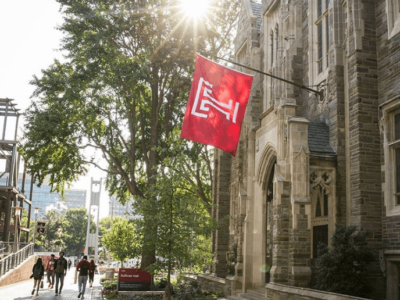Get the latest ranking of Top 10 Universities for Pre-Med Students 2019 here.
As exciting (and scandalous) as Grey’s Anatomy may be, becoming a doctor is no walk in the park. But before you even begin thinking about what medical school you want to go to, you’ll have to survive undergrad first. While pre-med isn’t exactly a major, many universities offer a track that’ll prepare you for med school. Pre-med clubs, shadowing opportunities and special programs should be considered when you’re deciding how you want to begin your medical career. College Magazine took some of the load off your shoulders (you guys have a lot of work ahead of you) and ranked the best pre-med schools for students.
Check out the best pre-med schools that’ll prepare you for the MCAT.
1. University of North Carolina at Chapel Hill

Ninety percent of UNC’s students who apply to medical school get in…let that sink in for a second. One of this university’s gems is their 9-week Medical Education Development (MED) summer program. This rigorous program allows students to shadow physicians and participate in lectures and seminars for professional development. MED also mirrors a first-year medical student curriculum—it’s like getting a little taste of med school. Although there is no specific pre-med track at UNC, these students still receive a lot of guidance. “I think that the way all pre-med students, regardless of their declared majors, are accommodated and assisted throughout the process is [unique],” said Danielle Jamieson, a psychology and Hispanic linguistics senior.
2. George Washington University

The pre-med students at GW aren’t limited to studying within the U.S. The university offers a study abroad program in the United Kingdom where students are given the option to either study at Kings College University of London or Oxford University. GW also offers an all-in-one program where students can earn their bachelor’s degree and medical degree. However, this is a selective program. Only students who have demonstrated leadership and academic excellence, and have healthcare experience are permitted in this program. These lucky students get their MCAT waived and are admitted into GW’s Medical School at a fixed tuition (big emphasis on lucky students).
3. Harvard University
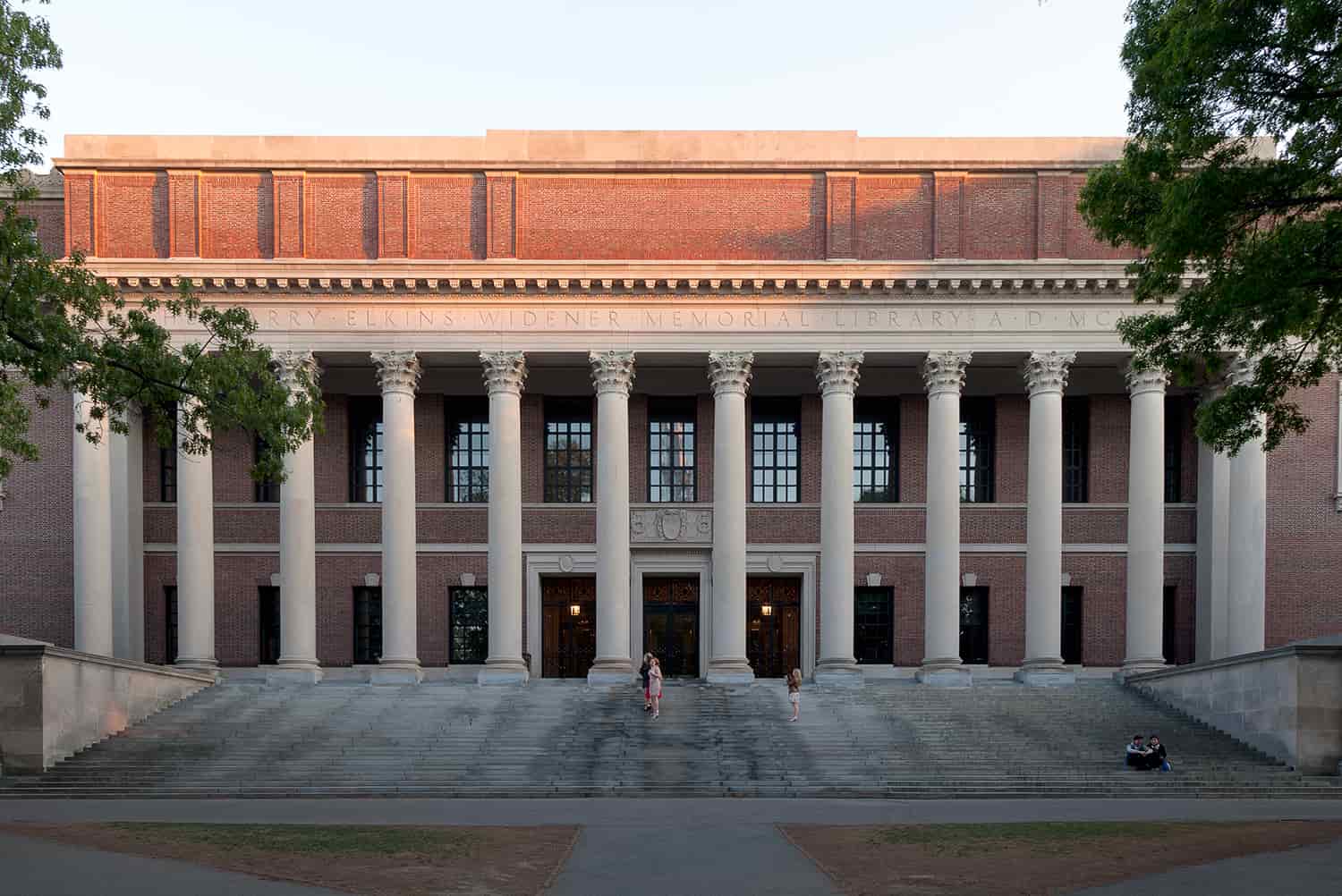
Ever wish you had a mentor who was also a doctor and always available for you? Well, Harvard does for their pre-med students. “At Harvard, we have three separate pre-medical advisers, one of whom is a doctor, available at any time, in addition to a pre-medical advisor who lives in the same dorm as you once you get to sophomore year, which is not common at other colleges,” said Bryan Peaker, a freshman studying human developmental and regenerative biology. And the advising doesn’t stop there. Harvard has a handbook for students on the pre-med track that tells them what classes they need to take, when to take them and how to get into medical school.
4. Boston University

Remember when Charlie got a golden ticket to get into Willy Wonka’s Chocolate Factory? This is a similar case for the students at BU, except instead of a chocolate factory it’s med school. With their Early Assurance Program, students are guaranteed a ticket (provisional admission) into BU’s Medical School. This university also offers a duel liberal arts and medical degree path that gives students the chance to earn both their Bachelor of Arts and medical degree in seven years, as apposed to eight. To get into their accelerated program (different from the early assurance one) you need to complete the SAT or ACT plus Writing and SAT Subject Tests in Chemistry Math 2 and, if you’re feeling brave, Foreign Language. This place keeps sounding more and more like a chocolate factory.
5. Georgetown

Imagine finding out you got into medical school during your sophomore year of college—that’s what we call a stress reliever. The pre-med students at Georgetown get this privilege with the university’s Early Assurance Program. This program is for students who want to attend Georgetown’s School of Medicine and have excelled in their studies and have completed four semesters and classes in biology, chemistry, organic chemistry. These brainiacs can apply at the end of their sophomore year if they have completed four semesters at Georgetown and have taken four pre-med courses. Another plus from this program is that the students’ MCAT is waived. Georgetown also has a few pre-med clubs like the Pre-Medical Society and the Pre-Dental Society. The Pre-Medical society not only provides advising for pre-med students, but also sponsors mock interviews and brings in guest speakers from the medical field to talk to the student members.
6. Johns Hopkins University
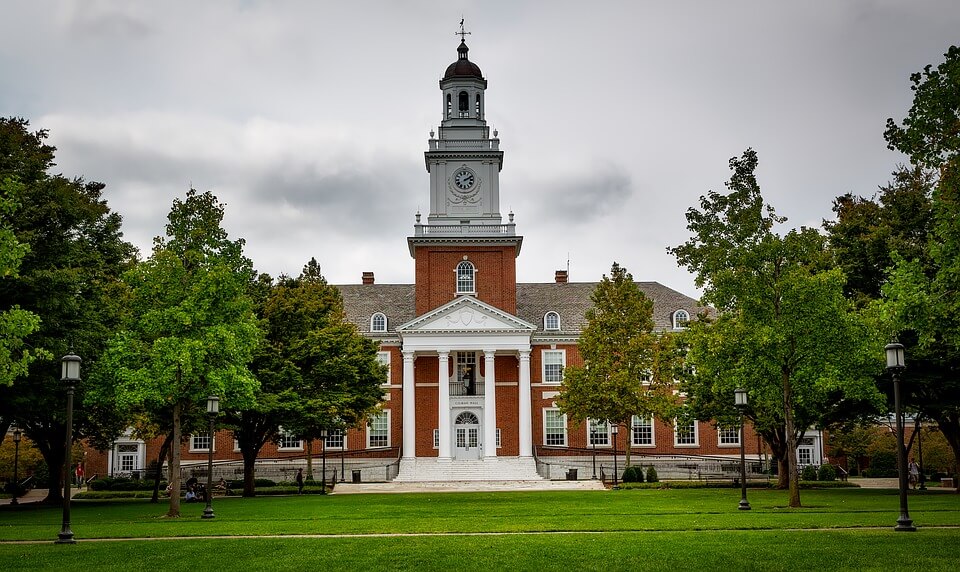
Some say the best learning happens outside of the classroom, and that’s the case at Johns Hopkins University. Occasionally the professors let their students into their labs for research. The students here can get even more outside learning by taking a 15-minute shuttle ride to Johns Hopkins Medical Institute, where they can shadow doctors and conduct research. With all these opportunities, the pre-med students here don’t feel the need to compete with each other. “As undergrads, we encourage and assist each other in all of our coursework. [It’s] definitely not a cut-throat, competitive environment like some say,” said George Bugarinovic, a public health and natural sciences senior.
7. University of Pennsylvania
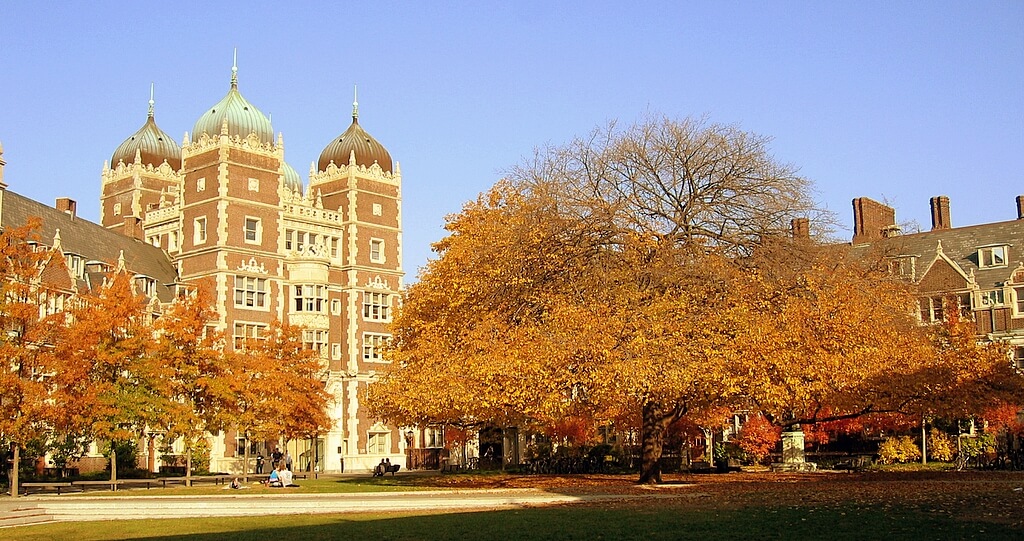
If you’re in no rush to start med school, you’ve stumbled upon the perfect university. U Penn doesn’t believe in giving their pre-med students a fast track path into medical school. They want their students to complete their degree in four years so they can take additional classes that will make them more prepared for med school and beyond. U Penn is also located near several large medical institutes, like the Pennsylvania Hospital, which provide them with opportunities to shadow doctors and volunteer at hospitals. Clearly, this university knows what it’s doing since 76 percent of U Penn students get into medical school.
8. University of Washington
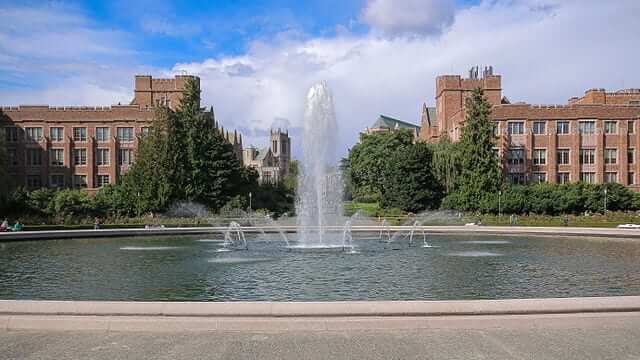
As one of the top medical schools in the nation, it’s no surprise that the University of Washington has one of the best pre-med tracks in the nation as well. With a large number of premedical clubs (Alpha Epsilon Delta is a big one) and numerous shadowing opportunities, these students will be wearing white coats in no time. “The shadowing opportunities and your ability to get into research your freshman year is unreal, it’s [one] you can’t get everywhere. My winter quarter of my freshman year I got to shadow a mitral valve replacement [surgeon],” said Alec Sullivan, a competitive history of ideas sophomore.
9. Cornell University

Here’s a shocker: another Ivy landed on our list. With its two-year pre-med track program, Cornell prepares students by offering courses—introductory biology and chemistry courses to name a few—on sciences that are related to medicine. Students also have the chance to volunteer at the Cayuga Medical Center—a non-profit hospital right by the university. One of Cornell’s greatest resources is their PATCH club—a student-run organization that brings together pre-med and pre-health students. PATCH welcomes all pre-health students and offers a supportive environment and beneficial opportunities for its members such as bringing in guest speakers to talk about their experience in the health care field.
10. Northwestern University
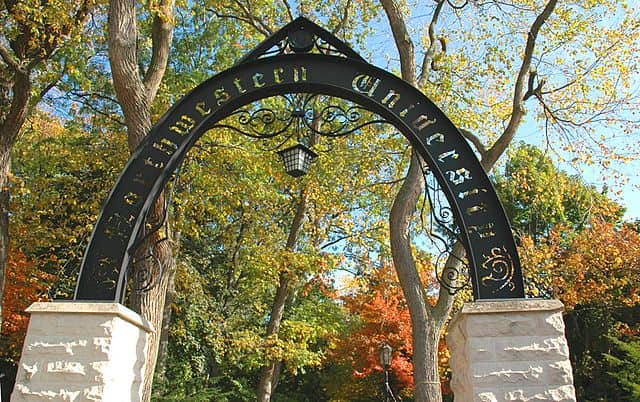
The pre-med track is not an easy one, and Northwestern University gets that. Its pre-med peer mentor program (NU PPMP) selects upperclassmen with a strong academic standing to guide and support underclassmen on the pre-med track. This university is also big on research. Students are allowed to conduct their own independent study.“I joined a lab for two years and was able to take a really active role in research and actually got a Nature publication out of my time there,” said Jane Wang, biology major and 2014 graduate.
If you’re applying to schools with a focus on pre-med, you’re one step ahead of the game. Take another step by choosing a major that will further prepare you to excel on the MCAT. While you don’t necessarily need to major in the sciences to apply to med school, you will be tested on biology, chemistry, physics, sociology and psychology on the MCAT. In other words, it’s helpful. But you can just as easily take these courses while majoring in something else. Be sure to major in your passion first while keeping in mind basic course requirements for med school. Below are some of the basics that top medical schools list. Keep in mind these change depending on which school you apply for and you can get more information at the AAMC’s Medical School Admissions Requirements site.
- Biology General
- (Inorganic) Chemistry and Organic Chemistry
- Biochemistry
- General Physics
- Mathematics
- English
- Behavioral & Social Sciences
When you’re ready to take the MCAT, get the books that will get you there. Test prep doesn’t have to be painful if you get a head start. Get the books, set your study plan and dive in.
How to be Pre-Med


Kaplan MCAT Complete 7-Book Subject Review


Kaplan MCAT Flashcards & App


Keep reading for tips to nailing your medical school application.
A meaningful personal statement.

Pre-med students get 5,300 characters (including spaces) to show application officers who they are. “Deciding what to write about really depends on why you want to become a doctor,” said Shane Magbual Rayos Del Sol, University of Cincinnati College of Medicine M1, UC Irvine alumnus and Georgetown University alumnus. “[I worked] with a doctor who valued his patient’s values, culture and perspective. The way he listened to his patients and really understood them helped me understand that a successful doctor is an individual who can not only apply the sciences but also connect with others.”
Personal statements give medical schools a first impression of you—so you need to make it good. Avoid super cliché topics, but also keep your writing simple and honest. “The concept of serving the underserved was an important theme throughout my application,” said Brandon Nidea, UC COM M1 and University of Illinois at Urbana-Champaign alumnus.
Think about what kind of candidate you want to present to medical schools. And once you finish that personal statement, don’t set it aside. Give it to trusted advisors or close friends to review.
Resume experience that shows your commitment to the medical field.
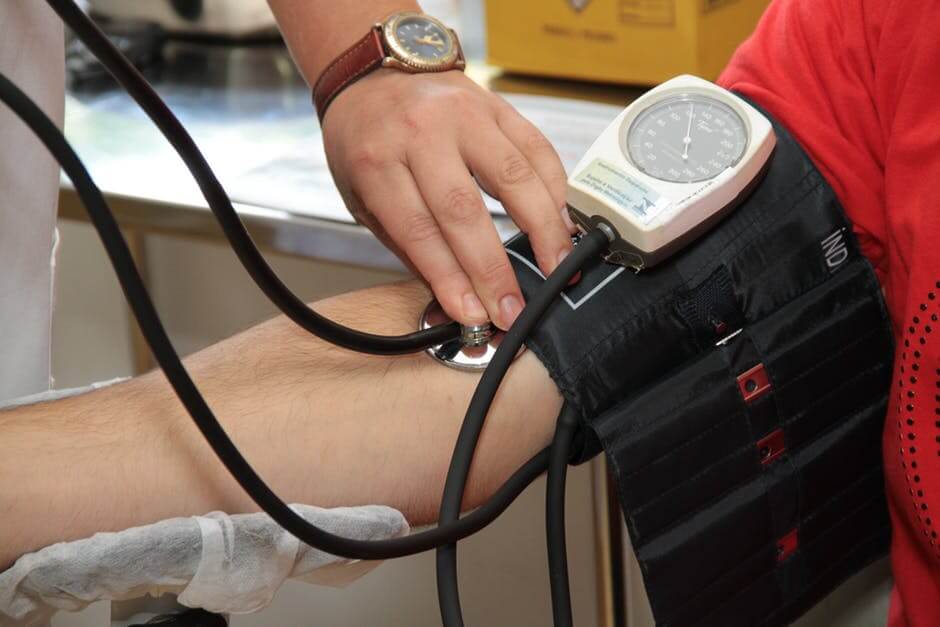
A well-informed pre-med student knows that she needs a good math and science GPA, shadowing, research, volunteering and a killer MCAT score to be a competitive applicant. But you might not have enough time to do it all—so choose the schools you apply to wisely.
“The best way to stand out is to find the school that has similar values and ideals to you,” said Farzaan Kassam, M1 at the UC COM and Northwestern University alumnus. In other words, don’t apply to research-heavy schools if you don’t have research on your resume. Or don’t apply to Ivy Leagues if your grades and scores aren’t well above average.
Clinical experience outside of shadowing shows your commitment and familiarity with the medical industry. Plus, you can make a little extra cash to help pay for those application fees. “My grades aren’t competitive, my research wasn’t ground breaking and I absolutely did not enjoy volunteering at the hospital,” said Rayos Del Sol. “All jokes aside, what made a good applicant was working directly with a physician as a medical scribe… It helped me see the type of person I wanted to become, and it showed on my medical school application.”
Getting to know the different professionals while working as a scribe—doctors, nurses, technicians, etc.—give you a good glimpse into your future and solidify your dream to earn that M.D. or D.O. And you’ll feel like a part of a healthcare team.
Letters of recommendation from professors that actually know you.

Medical school applications require at least a “committee letter” or three individual letters (two from science faculty and one additional letter). Committee letters make life easier if your undergrad college offers them, but more often than not you’re stuck persuading three professionals to write you letters of recommendation.
“The entire process involves many logistics, and it is helpful to have all that worked out before starting the application,” said Kassam. “Little things such as proactively notifying professors writing letters of recommendation or having all your transcripts prepared can be a nice stress relief when application season starts.”
Sit down and think about which science professors you really connected with during your undergraduate or graduate studies. Maybe you visited your organic chemistry professor once a week for an entire semester to ace the class. Or perhaps your evolution professor gave your final research paper a glowing review. You want the people writing letters for you to actually know about your work ethic so they can show it to the people reviewing your applications.
Similarly, your third letter should come from someone who knows something about you outside of academics—like a research lab supervisor or a pediatrician you shadowed every summer back home.
Persistence, persistence, persistence.

Only 39.3 percent of medical school applicants got accepted in 2015 according to Kaplan. You might not get in your first time, but that’s no time to give up hope. Take a gap year and do something big that will stand out when you reapply. Scribe at a hospital for a year. Go abroad for a volunteer medical mission.
Rayos Del Sol went to Georgetown University two years after finishing his undergrad to pursue a Master’s in Physiology and Biophysics. “I think this program really helped me become more competitive for medical school because the program required me to take some system-based classes with medical students.”
Medical school will likely be some of the most challenging of your life. Your weekends become prime study time. And you’ll use the library as not only your study space, but also your dining room and nap area.
“It honestly is draining to go to class for four hours a day and study for the majority of the day,” Rayos Del Sol said. “What has kept me in homeostasis is shadowing physicians and having people that are supportive. It reminds me of why I’m here and it makes the whole experience, in some kind of crazy way, fun.” Nidea said he spends at least 10 hours in the library studying on the weekends, and even eats two meals there sometimes.
Once in the study grind of medical school, you’ll realize that applying was the easiest part of this whole process. The persistence that carried you through the application cycle will fuel you through four years of non-stop studying and rotations, two or more years of residency, and fellowships.
But at the end of all that schooling, you’ll find yourself in charge of patients’ wellbeing. Take it seriously and persist in improving the wellness of any patient you encounter.
Congrats! The best pre-med schools helped you land a spot in med school.
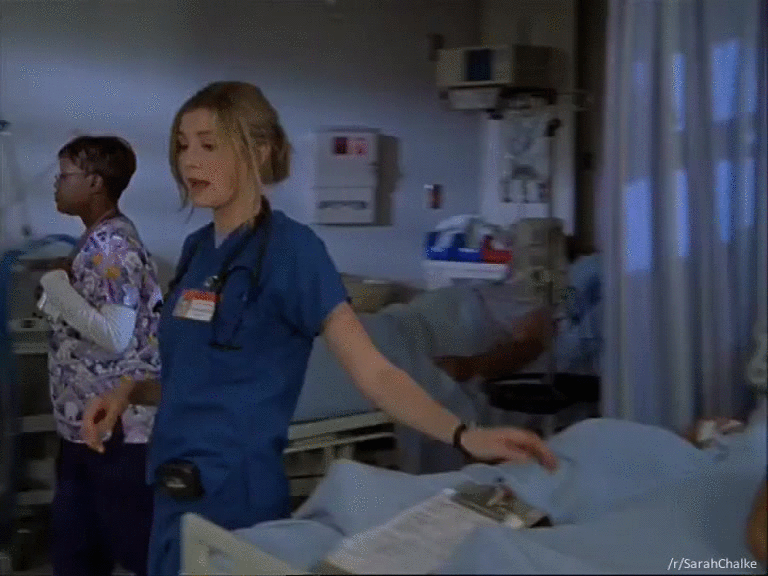
Finding out your years of hard work finally earned you acceptance to medical school will make you emotional. Kassam said, “I was ecstatic. I had wanted to be a doctor for years, and to see my hard work and dedication pay off was truly amazing.”
The months you spent hidden in the darkness studying every chain reaction for the MCAT paid off—now prepare for four years plus a residency of even longer study and work hours. Find out how these medical students found out their dreams finally came true.
“It was the day before Thanksgiving, and I was shadowing a hand surgeon when I got the call. Since I was watching a surgery, I couldn’t answer the phone. But once I got out of the OR, I checked my voicemail and I started crying in front of the doctor I barely even knew. It was pretty embarrassing, but the doctor started going around the OR telling random doctors and nurses that I just got accepted into medical school. That was pretty memorable. Furthermore, one of the doctors said, ‘Get ready for the hardest years of your life.’” – Rayos Del Sol
“I was in a shopping mall with my girlfriend… I refreshed my email and saw that the University of Cincinnati had just updated my status… I was so nervous that I couldn’t figure out how to get to the page where my application status had been submitted. I stared at my phone for a while until my girlfriend noticed that I was glued to my screen… [I] gave her my phone to figure it out. A couple minutes passed and she handed back my phone with a web page I had not seen before. The page looked like a student’s page with so many tabs that provided an ID, help links, Step 1 information. I was so confused, but eventually things had clicked. I was accepted to medical school!” – Nidea
*Updated December 28, 2017 by Celina Pelaez to include tips for nailing your med school application and what it really feels like to get into med school.









